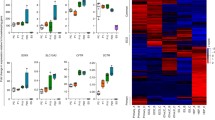Abstract
The repair and reconstruction of bile ducts damaged by disease or trauma remains a vexing medical problem. In particular, surgeons have few options when it comes to a long segment reconstruction of the bile duct. Tissue-engineered substitutes, with properties similar to the native tissue, might represent a solution for the functional reconstruction of bile ducts. In particular, decellularized tissues and organs represent a suitable option for tissue engineering when specific scaffolds are needed. However, the optimal conditions to completely remove all the cellular components and minimally affect the structural and residual biochemical properties of the extracellular matrix are still to be found. This paper presents the characterization of rat bile ducts after implementing an established detergent-enzymatic decellularization method. One cycle was enough to generate a complete decellularized bile duct matrix, histologically and structurally similar to the native one. The network of collagen, reticular and elastic fibers, found in the native bile duct matrix was well preserved. Moreover, the decellularization approach did not affect the elastin content.




Similar content being viewed by others
References
Pellegrini, C. A., Thomas, M. J., Way, J. W. (1984). Recurrent biliary structure. Patterns of recurrence and outcome of surgical therapy. American Journal of Surgery, 147, 175–180.
Archer, S. B., Brown, D. W., Smith, C. D., Branum, G. D., Hunter, J. G. (2001). Bile duct injury during laparoscopic cholecystectomy: results of a national survey. Annals of Surgery, 234, 549–559.
Badylak, S. F. (2004). Xenogeneic extracellular matrix as a scaffold for tissue reconstruction. Transplant Immunology, 12, 367–377.
Li, F., Li, W., Johnson, S., Ingram, D., Yoder, M., Badylak, S. (2004). Low-molecular-weight peptides derived from extracellular matrix as chemoattractants for primary endothelial cells. Endothelium, 11, 199–206.
Baiguera, S., Jungebluth, P., Burns, A., Mavilia, C., Haag, J., De Coppi, P., et al. (2010). Tissue engineered human tracheas for in vivo implantation. Biomaterials, 31, 8931–8938.
Baiguera, S., Gonfiotti, A., Jaus, M., Comin, C. E., Paglierani, M., DelGaudio, C., et al. (2011). Development of bioengineered human larynx. Biomaterials, 32, 4433–4442.
Haag, J., Baiguera, S., Jungebluth, P., Barale, D., Del Gaudio, C., Castiglione, F., et al. (2012). Biomechanical and angiogenic properties of tissue-engineered rat trachea using genipin cross-linked decellularized tissue. Biomaterials, 33, 780–789.
Baiguera, S., Del Gaudio, C., Kuevda, E., Gonfiotti, A., Bianco, A., Macchiarini, P. (2014). Dynamic decellularization and cross-linking of rat tracheal matrix. Biomaterials, 35, 6344–6350.
Baiguera, S., Del Gaudio, C., Lucatelli, E., Kuevda, E., Boieri, M., Mazzanti, B., et al. (2014). Electrospun gelatin scaffolds incorporating rat decellularized brain extracellular matrix for neural tissue engineering. Biomaterials, 35, 1205–1214.
Meezan, E., Hjelle, J. T., Brendel, K. (1975). A simple, versatile, non disruptive method for the isolation of morphologically and chemically pure basement membranes from several tissues. Life Sciences, 17, 1721–1732.
Ribatti, D., Conconi, M. T., Nico, B., Baiguera, S., Corsi, P., Parnigotto, P. P., et al. (2003). Angiogenic response induced by acellular brain scaffolds grafted onto the chick embryo chorioallantoic membrane. Brain Research, 989, 9–15.
Jablonska, B., & Lampe, P. (2009). Iatrogenic bile duct injuries: etiology, diagnosis and management. World Journal of Gastroenterology, 15, 4097–4104.
Pakarinen, M. P., & Rintala, R. J. (2011). Surgery of biliary atresia. Scandinavian Journal of Surgery, 100, 49–53.
Nielsen, M. L., Jensen, S. L., Malmstrom, J., Nielsen, O. V. (1980). Gastrin and gastric acid secretion in hepaticojejunostomy Roux-en-Y. Surgery, Gynecology & Obstetrics, 150, 61–64.
Del Gaudio, C., Baiguera, S., Ajalloueian, F., Bianco, A., Macchiarini, P. (2014). Are synthetic scaffolds suitable for the development of clinical tissue-engineered tubular organs? Journal of Biomedical Materials Research. Part A, 102, 2427–2447.
Badylak, S. F., Weiss, D. J., Caplan, A., Macchiarini, P. (2012). Engineered whole organs and complex tissues. Lancet, 379, 943–952.
Nelson, C. M. (2009). Geometric control of tissue morphogenesis. Biochimica et Biophysica Acta, 1793, 903–910.
Reilly, G. C., & Engler, A. J. (2010). Intrinsic extracellular matrix properties regulate stem cell differentiation. Journal of Biomechanics, 43, 55–62.
Kim, S.-H., Turnbull, J., Guimond, S. (2011). Extracellular matrix and cell signalling: the dynamic cooperation of integrin, proteoglycan and growth factor receptor. Journal of Endocrinology, 209, 139–151.
Acknowledgments
This work was supported by a grant (pd 239-28/04/2009, GRT 1210/08) issued on 28 December 2008 by the region Tuscany (Italy) entitled “Clinical laboratory for complex thoracic respiratory and vascular diseases and alternatives to pulmonary transplantation.”
Author information
Authors and Affiliations
Corresponding author
Ethics declarations
The publication of this manuscript was approved by the Institutional Review Board of the Kazan Federal University. The study was approved by the Animal Care and Use Committee and the Bioethics Committee of the University of Florence (Italy).
Rights and permissions
About this article
Cite this article
Baiguera, S., Arkhipva, S., Yin, D. et al. Rat Bile Duct Decellularization. BioNanoSci. 6, 578–584 (2016). https://doi.org/10.1007/s12668-016-0287-9
Published:
Issue Date:
DOI: https://doi.org/10.1007/s12668-016-0287-9




